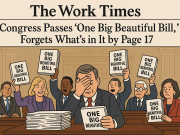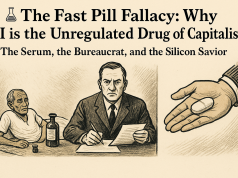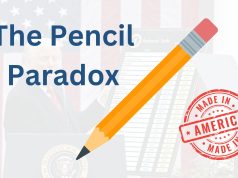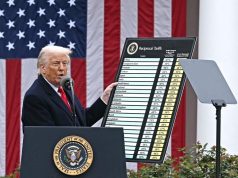The other day, I found myself in the middle of a surprisingly spirited debate—not about AI or the future of work, but about something far more exciting: tariffs. Yes, really.
We were a group of friends, all from different backgrounds—one runs a bakery, another’s a data analyst, and someone just enjoys stirring the pot at dinner. Somehow, the conversation veered into why the U.S. is raising tariffs on other countries, and before dessert hit the table, we were collectively puzzling over how these tariffs are calculated.
So, in honor of that delightfully nerdy dinner party, here’s a simplified, slightly humorous, and hopefully enlightening explanation of how the U.S. is calculating tariffs—and why the current method is a bit like using a fork to eat soup.
🧮 How the U.S. Calculates Tariffs Today
Picture this: The U.S. trades with lots of countries. Some send us a lot more stuff than we send them. That’s called a trade deficit.
To fix this, someone at the U.S. Trade Representative’s office said, “Let’s make a fair system. If a country sells us more than we sell them, we’ll increase the tariffs on their goods until the trade is balanced.”
Boom. Reciprocity. Sounds logical, right?
So they whipped up a formula:
If imports from Country X are bigger than exports to them, we apply a tariff (a kind of tax) big enough to shrink that gap to zero.
They even used fancy economic terms like “elasticity” (how people change behavior when prices go up) and “pass-through rate” (how much of the tariff shows up in the final price).
In English: “Let’s raise the price of their stuff until Americans buy less of it—and then, magically, the trade will balance.”
You’re Alex. You always bring homemade cookies, and your friend Jordan always brings chips. Every day, Jordan trades two bags of chips for one of your cookies. Over time, you notice something strange: you’re always giving away more cookies than you get chips.
So you go to the lunch monitor (let’s call her Ms. TradeRep) and say, “Hey, this isn’t fair! I want it to be even!”
She nods and pulls out her calculator. “Let’s make a formula to fix this!”
🧠 Ms. TradeRep’s Formula
She says: “If Alex gives more than Jordan, let’s make Jordan pay more next time until both of you are giving and getting exactly the same.”
So she makes this formula:
New Price = Difference in Trade ÷ (How much Jordan buys × How sensitive Jordan is to price)
This means:
- If Jordan keeps taking more cookies than giving chips,
- We’ll raise the price (tariff) of cookies for Jordan,
- Until one day, Jordan stops taking more than they give.
Simple, right?
🤔 But… What’s Missing in the Formula?
Now let’s look at why this isn’t quite fair or smart, even though it sounds nice.
1. It Only Sees the Numbers, Not the Reasons
Maybe Jordan doesn’t bring enough chips because:
- The vending machine at Jordan’s house broke,
- Jordan’s parents only pack salty snacks,
- The school rulebook doesn’t allow Jordan to bring homemade cookies.
But the formula just blames Jordan, without understanding why things are uneven.
🧠 Real-life version? Other countries may block U.S. goods not just with price (tariffs), but with hidden rules (regulations, taxes, weird paperwork). The formula doesn’t see those.
2. It Thinks People Will Instantly Change
Ms. TradeRep thinks Jordan will stop taking cookies if they get more expensive. But maybe Jordan loves your cookies and will keep trading anyway.
🧠 Real-life version? The formula uses something called “elasticity,” which is like how sensitive people are to prices. But guess what? Some things—like medicine, electronics, or rare products—people will buy no matter what. So raising tariffs doesn’t change anything!
3. It Ignores the Friends Around You
If you raise the cookie price for Jordan, Jordan might just trade with Riley instead. Or maybe Jordan starts bringing better snacks from someone else’s house.
🧠 Real-life version? If we slap tariffs on one country, they often find another country to trade with, and we get left out.
4. It Doesn’t Care If You Can Make Your Own Snacks
Ms. TradeRep might make cookies expensive for Jordan, but what if you don’t even like your own cookies anymore, or can’t bake them well?
🧠 Real-life version? Tariffs only help if we can actually make good stuff at home. If not, we just make things expensive for ourselves.
🪄 A Better Way to Help Alex and Jordan
Instead of only using a calculator, Ms. TradeRep could:
- Ask why Jordan doesn’t bring enough chips (understand the barriers),
- Check if cookies are even available for both sides (do we make enough?),
- See if the whole lunchroom is working fairly, not just Alex and Jordan.
This way, she helps everyone—not just by equalizing the numbers, but by fixing the system that made things unfair in the first place.
🎓 TL;DR (Too Long; Didn’t Recess)
The current tariff formula is like a lunch monitor who tries to balance snack trades with a calculator but forgets:
- Why trades are unfair to begin with,
- That not everyone reacts to prices the same way,
- That the bigger lunchroom matters,
- And that making your own snack matters more than taxing someone else’s.
Instead of just raising cookie prices, we should fix the lunchroom rules, help kids make better snacks, and build trust.





























